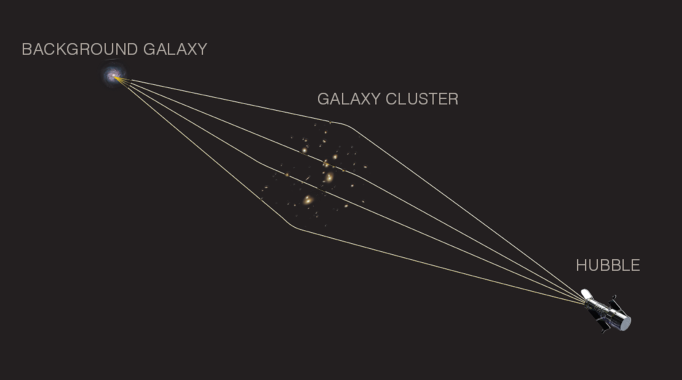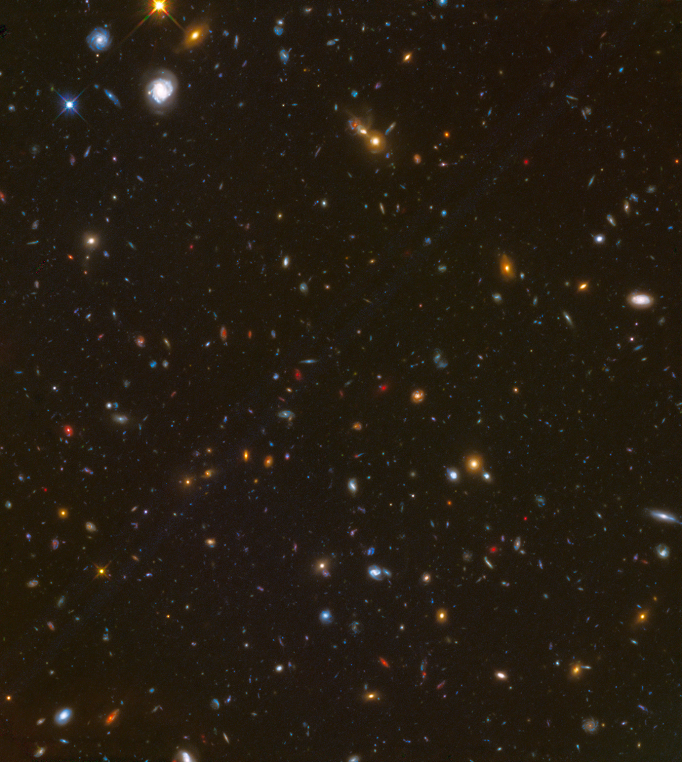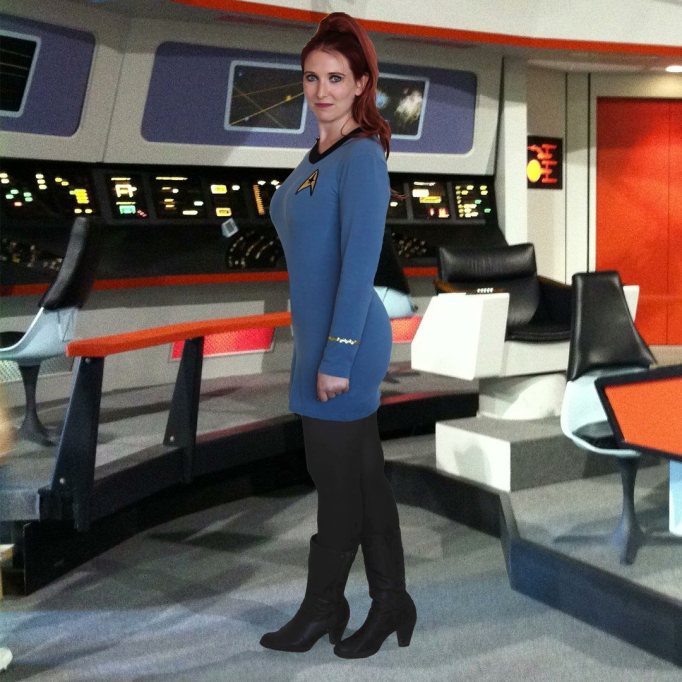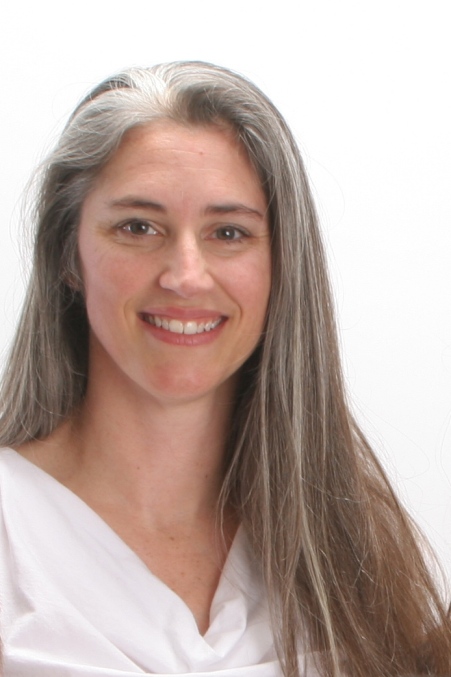by Ray A. Lucas
We recently finished taking data for the Hubble Frontier Fields project, and we’ve learned many very useful and exciting things, both about the universe and the objects in the images. We’ve also learned much in terms of technical issues in the images as well. The recent STScI Newsletter article by Jennifer Mack and Norman Grogin recounts much of the latter. For me, however, the most fun in projects like this is usually the beginning, with the back and forth of discussions both scientific and technical about exactly what to do and how to do it. I think it is the speculative nature and the ideas flowing back and forth in the developmental phase of programs such as this that most whets my appetite for finding what we ultimately see in the images.
Having been a member of all of STScI’s internal working groups for the various community service deep field projects we have done here since the very first one, and even one of its important predecessors, it has been very interesting to me, and the most fun, to be a part of the debate, discussions, and activity involved in designing and planning these observations, and the way that process has taken place over those years. So, in this blog article, I’d like to share my own longer, and more personal context for the Frontier Fields program and those which went before.
In the beginning, the Servicing Mission 1 Early Release Observations (SM1 ERO) were a demonstration of the power of the new, optically corrected Wide Field and Planetary Camera 2 (WFPC2) and Hubble combination. One of the major goals of the particular SM1 ERO program in which I was involved was simply to go as deeply as we could in 10 orbits in a redder WFPC2 filter in what, for then, was viewed as a very deep—perhaps the deepest ever—detailed, high-resolution image of the night sky. This was in the area of a cluster at a redshift of ~0.4, and a quasar beyond it in the same field of view with a possible more distant cluster around that at a redshift of ~2.055. (Quasars are incredibly bright objects thought to be powered by supermassive black holes.) This image of galaxy cluster Abell 851, or CL0939+4713, showed that Hubble and the then-new WFPC2 were superb tools for revealing the shapes of very distant galaxies in the early universe.

After the first servicing mission to Hubble in December 1993, the newly installed Wide Field and Planetary Camera 2 (WFPC2) imaged the central portion of a remote cluster of galaxies called Abell 851, or CL 0939+4713. At the time this observation was taken, though only of 10 orbits depth in one filter, it was one of the deepest detailed optical images ever taken of the night sky. This observation was a precursor to and helped inspire the later Hubble Deep Fields and Frontier Fields and other similar work. Credit: Alan Dressler (Carnegie Institution) and NASA.
Even with the success and revelatory power of that image, it was still viewed as a very risky thing of possibly dubious value to commit many more HST orbits and staff time and effort to try a significantly even deeper field. STScI’s then-Director Bob Williams convened a panel of community experts who debated whether such a thing should be attempted, and if so, what type of field should be targeted. The idea that something should initially be tried in a generic, nominally empty deep field eventually came to the fore, but it was still seen as a possibly big gamble that might not live up to its potential for the great amount of time required. It took a courageous decision by Williams to go ahead with the project, committing a significant portion of his Director’s Discretionary time to the project.
A number of people rightly felt that they already had significant work of their own which needed pursuing and finishing and, when asked if they would be willing to take part in this original HDF experiment, declined. However, there were still some relatively few of us who had been discussing the possibilities of this informally. In my own case, having helped design and set up the SM1 ERO observations of CL0939+4713, I was eventually asked if it was technically feasible for us to even attempt such deep field observations.
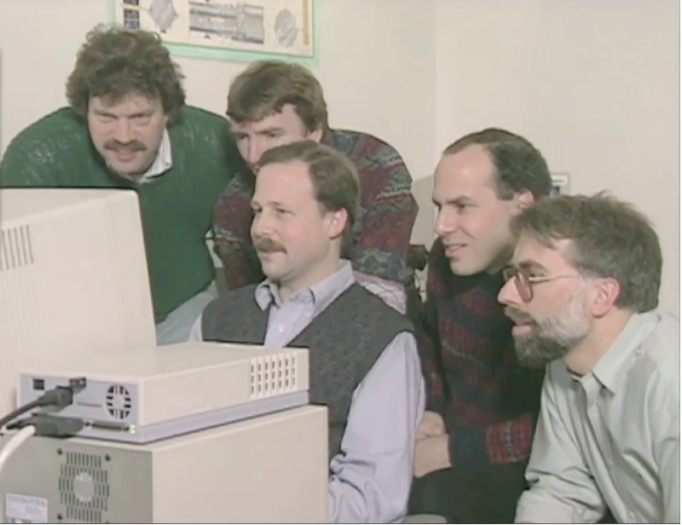
Some members of the original Hubble Deep Field team looking at HDF images in December 1995 or early 1996. Left to right: Ray Lucas, Richard Hook, Harry Ferguson (at computer), Marc Postman, and Hans-Martin Adorf.
We performed many experiments helping to define what kinds of possibilities existed. Our experiments were, fortunately, successful, and the ultimate success of the original Hubble Deep Field ushered in a new sociological phenomenon in the field: [professional astronomical] community-service projects with high-level science products quickly released to the astronomical community, with prohibitions on internal staff use of those data and catalogs for their own scientific use for some pre-determined time.
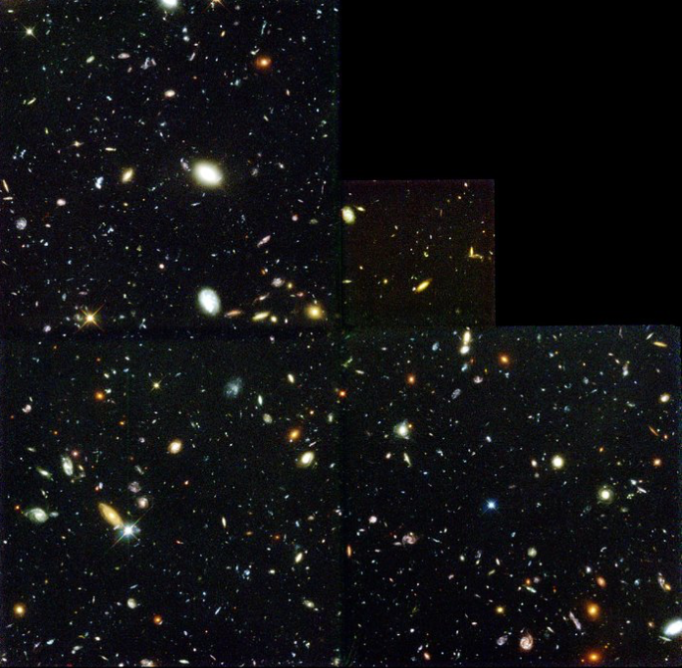
The original 1995/1996 Hubble Deep Field WFPC2 image covered a speck of the sky only about the width of a dime at 75 feet away, or a grain of sand held at arm’s length. In this small field, Hubble uncovered a bewildering assortment of thousands of galaxies at various stages of evolution. Credit: R. Williams (STScI), the Hubble Deep Field Team and NASA/ESA.
In 1998, the Hubble Deep Field-South targeted a quasar with both imaging and spectroscopy, and included many more flanking fields and much deeper parallel observations—all in multiple cameras spanning wavelengths from long UV to infrared, including both the newer Space Telescope Imaging Spectrograph (STIS) and Near-Infrared Camera and Multi-Object Spectrometer (NICMOS) instruments, as well as WFPC2. Even today, I think these HDF-South observations have been underutilized, although they have now been targeted by, for example, the Multi Unit Spectroscopic Explorer (MUSE) at the Very Large Telescope (VLT) of the European Southern Observatory. This underutilization came as the community gravitated more to observations of another southern-hemisphere field, the Chandra Deep Field-South, which by then had deeper X-ray observations. Hopefully the HDF-South and its Flanking Fields will still be exploited more fully in the future.

This 1998 Hubble Deep Field-South (HDF-South) WFPC2 image was similar to that of the original Hubble Deep Field (also called Hubble Deep Field-North, or HDF-North) in many ways. This was reassuring, although it was not the deepest of the images in the HDF-South. The deepest HDF-South image was actually taken by the CCD camera on the newer Space Telescope Imaging Spectrograph (STIS) instrument, and it had a quasar in the center of its field of view that was also observed with the STIS spectrograph. Other deep observations were also simultaneously obtained with the newer Near-Infrared Camera and Multi-Object Spectrograph (NICMOS) instrument, which was also installed in 1997 at the same time as STIS. A fairly deep “STIS-on-NICMOS” image was also taken on top of the area of the deep NICMOS image, and many parallel Flanking Fields were also imaged in WFPC2, STIS, and NICMOS to shallower depth. Credit: R. Williams (STScI), the HDF-S Team, and NASA/ESA.

The HDF-South was much more complex than the original HDF-North, consisting of a very deep field centered on the quasar in the smaller field of view of the STIS CCD camera (and quasar spectra taken with the spectrographic mode of STIS), plus parallel deep WFPC2 and NICMOS images. Fairly deep images were also taken with STIS superimposed on the deep NICMOS image, with similarly deep parallel images in NICMOS and WFPC2. Finally, shallower Flanking Fields were taken with WFPC2 around and between the STIS, WFPC2, and NICMOS deep fields, and parallel images of similar depth in STIS and NICMOS were taken simultaneously, such that the entire HDF-South consisted of ~30+ fields imaged in 3 cameras across optical and infrared wavelengths, as well as quasar spectra. The STIS Deep Field with quasar in the center is near the top arrow. The NICMOS Deep Field is at lower left, and WFPC2 Deep Field is at lower right. STIS images were also taken of the NICMOS Deep Field at lower left. The extreme lower left image was the resulting NICMOS parallel, and the image at bottom center was the resulting WFPC2 parallel, all of medium depth. All the other images were shallower WFPC2 images and their associated STIS and NICMOS parallels. Credit: NASA, ESA, and Richard Hook (STECF)
Astronauts installed the Advanced Camera for Surveys (ACS) in 2002. Under then-Director Steve Beckwith, we designed the Hubble Ultra-Deep Field (in the middle of the Chandra Deep Field-South) around use of the ACS and using WFPC2 and NICMOS in parallel, creatively making the pure parallel operational system give us the then-deepest-ever detailed UV and infrared observations.

The original 2004 Hubble Ultra Deep Field, taken with the even newer, more sensitive ACS camera with a larger field of view, revealed thousands more galaxies than the earlier WFPC2 Deep Field images, in an even “deeper” core sample of the universe, cutting across billions of light-years. The snapshot includes galaxies of various distances, ages, sizes, shapes, and colors. In vibrant contrast to the rich harvest of classic spiral and elliptical galaxies, a zoo of oddball galaxies also litters the field. Some look like toothpicks or tadpoles; others like links on a bracelet. Some also appear to be interacting. These galaxies chronicle a period when the universe was still younger and more chaotic. Credit: NASA, ESA, and S. Beckwith (STScI) and the HUDF Team.
Subsequent observations with ACS and the even newer WFC3 camera have given us even greater depth and wavelength coverage at higher resolution, particularly in the infrared channel of WFC3. This led to the GO program—not an STScI community service program, but done by external observers adding to the HUDF via approval by the international peer-review committees which review proposals and recommend observations to be done—called the Extreme Ultra-Deep Field. This program combined all existing archival imaging with still more new, deep infrared observations to try to look even farther back in time.

Called the eXtreme Deep Field, or XDF, this photo above was assembled by combining 10 years of NASA Hubble Space Telescope photographs taken of a patch of sky at the center of the original Hubble Ultra Deep Field. More than 2,000 images of the same field were taken with Hubble’s two premier cameras – the Advanced Camera for Surveys and the Wide Field Camera 3, which extends Hubble’s vision into near-infrared light – and combined to make the XDF. The new full-color XDF image reaches much fainter galaxies, and includes very deep exposures in red light, enabling new studies of the earliest galaxies in the universe. The faintest galaxies are one ten-billionth the brightness of what the human eye can see. Hubble pointed at a tiny patch of southern sky in repeat visits for a total of 50 days, with a total exposure time of 2 million seconds. Credit: NASA, ESA, G. Illingworth, D. Magee, and P. Oesch (University of California, Santa Cruz), R. Bouwens (Leiden University), and the HUDF09 Team
All of this gives context to the observations which we have just recently finished: the Hubble Frontier Fields. Again convening a panel of community experts, and building on the success of large observing programs such as CLASH and CANDELS, STScI’s then-Director Matt Mountain explored a brilliant idea to use the gravitational lensing effect of massive galaxy clusters to magnify galaxies in the early universe beyond them, and to also provide a baseline for searches for higher-redshift supernovae. The plan was to come as close as is possible for Hubble to come to the bread-and-butter observations of the much-anticipated, soon-to-be launched James Webb Space Telescope in searching for some of the earliest galaxies in the distant, early universe.
The panel recommended that a group of six galaxy clusters and six adjacent parallel fields be targeted. That was a very important development, because it also addressed in a major way a phenomenon known as cosmic variance. In this phenomenon, the large-scale structure of the universe affects observations, so that a measurement of any region of sky may differ from a measurement of a different region of sky by a considerable amount. Because the size of the fields of view of Hubble’s cameras are roughly the size of a grain of sand held at arm’s length, we’re talking about deep line-of-sight “pencil beams” in the sky when we talk about these deep fields. With the superb resolution of Hubble’s cameras, incredible detail is attained, and we can see thousands of galaxies in unprecedented detail all across their fields of view.
But given what we now know about the larger-scale structure of the universe, when it comes to the matter which we can detect, at least, there are longer filaments and areas where they intersect, and voids in between. Sometimes, the small field of view of a camera may land on a filament of galaxies, and other times in a void between filaments, or partly on a filament and partly off. Therefore, the more deep fields we observe in various different places around the sky, the more we statistically beat down the perhaps unusual or anomalous statistical effects of any one particular local environment in the area of that particular deep field as we attempt to identify the more general nature of the universe across filaments and voids, etc.
A major feature of the Hubble Frontier Fields program is the use of two fields in parallel, on-cluster and off-cluster, for each of the galaxy clusters targeted in the program, giving us both a cluster-centric and a generic parallel field at some much larger distance away from the cluster, for each cluster. So, in effect, we get 12 fields for the price of six. Six on-cluster fields are dominated by each galaxy cluster’s environment—something very different from a traditional deep field in terms of the physics and dynamics affecting its galaxies, and also somewhat peculiar to that cluster— and six are off-cluster, parallel fields that contain thousands of field galaxies not particularly in any cluster environment. Given the relatively small angular size of each individual parallel field, this larger number of parallel fields especially helps to minimize the effects of cosmic variance when measurements from all other similar deep fields are combined or considered together.

This image illustrates the “footprints” of the Wide Field Camera 3 (WFC3) infrared detector, in red, and the visible-light Advanced Camera for Surveys (ACS), in blue. An instrument’s footprint is the area on the sky it can observe in one pointing. Adjacent observations were taken in tandem, or parallel. In six months, the cameras swapped places, with each observing the other’s previous location.
When Matt Mountain’s committee recommended a study of six galaxy clusters and six parallel fields, we still had to work out which clusters to observe. Under the overall leadership of Jennifer Lotz, we conducted a trade study, a common tactic in situations such as this. Various factors about each potential cluster and their advantages and disadvantages as potential targets were examined in greater detail. We tried to keep in mind anything which might bias our selections in various ways. The number of clusters was gradually winnowed down as we discussed each of them, until we had our final six. After that, we prioritized them, planning to do an initial set, and then the remainder if a mid-course review by the external panel felt that it was warranted to continue and complete the program based on results to that time.
A professional astronomical community program of improving gravitational lensing models was also put in place, with competitive proposals for grant funding to do the work and share the improved resulting models with the community. Also, having seen the power of public outreach in our other efforts, we involved those at STScI who are best at bringing our work to both the wider astronomical community and the public to allow them to help more meaningfully and widely bring our efforts to light. We also reviewed our prior experiences and policies and precedents from the various earlier deep field programs and debated whether any needed adjustment.
So, now, we can also say that we’ve been lucky. The Hubble Space Telescope and the science instruments have performed well, getting us all the data we had hoped and planned to get. As we continue to work on the data, we’re now seeing the more refined versions of the Frontier Fields images which we will release to the community soon. They are indeed beautiful and interesting, and they will help the community—all of us—to better prepare for the soon-to-come James Webb Space Telescope observations.

The James Webb Space Telescope is a large infrared telescope with a 6.5-meter primary mirror. Scheduled for launch in October of 2018, Webb will be the premier observatory of the next decade, serving thousands of astronomers worldwide. It will study every phase in the history of our universe, ranging from the first luminous glows after the Big Bang, to the formation of solar systems capable of supporting life on planets like Earth, to the evolution of our own solar system. This illustration shows the cold side of the James Webb Space Telescope, where the mirrors and instruments are positioned. Credit: Northrop Grumman.
Webb’s much greater size than Hubble, and the much greater sensitivity of the new telescope and its detectors, will mean that Webb can make the faster exploration of more deep fields a reality. The resulting statistical advantages will give us greater confidence in the answers we find in our ongoing community studies of galaxy origins, and their formation and evolution to the forms we see in galaxies much nearer by us in space and time. It has taken a lot of work from everyone involved in our various teams of people designing and planning, implementing and scheduling the observations, and processing the data, but it has been, as with the earlier programs, a joy to see the impact spread into the community.
For me, it has been one of the great privileges and honors of my many years here at STScI to have been a part of all of our various extragalactic, deep-field, community-service programs since the original Hubble Deep Field, and to have worked with so many exceptional people who have helped to conduct these programs and produce these science products for the use of the world-wide astronomical community and the public in general.
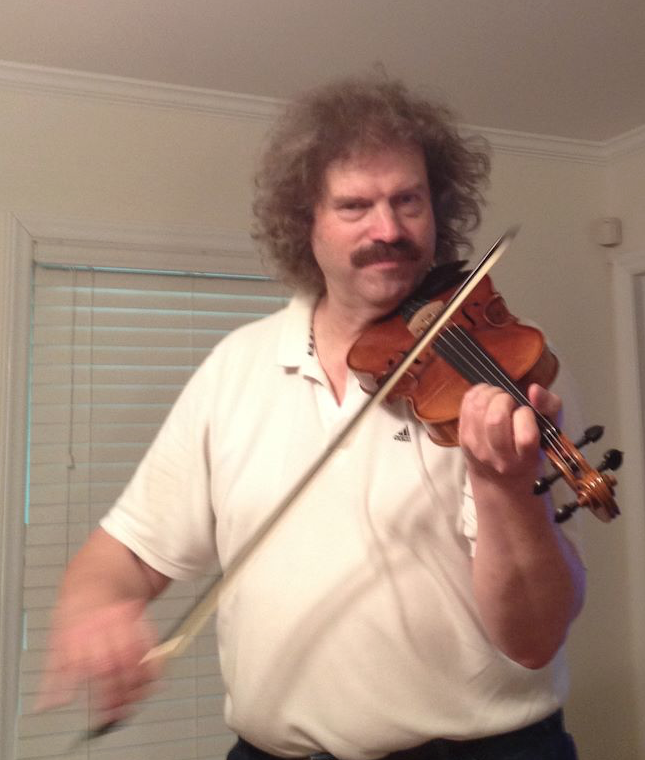
Ray Lucas is a Research and Instrument Scientist at the Space Telescope Science Institute, where he has worked for about 32 years. His main interests in astronomy are interacting and merging galaxies and galaxy formation and evolution. He has been a member of all of STScI’s community service Deep Field project teams since the original Hubble Deep Field, particularly helping to work out details of the observations in the early stages. In addition to many other smaller programs on various galaxies, he has also been an investigator on a number of large galaxy survey programs like GOODS, HUDF05, and CANDELS, and other projects of his own. Aside from astronomy, among many other things, his passions include music. He plays fiddle, mandolin, and Celtic bouzouki, and some other instruments as well. Here is a link to his web page.

